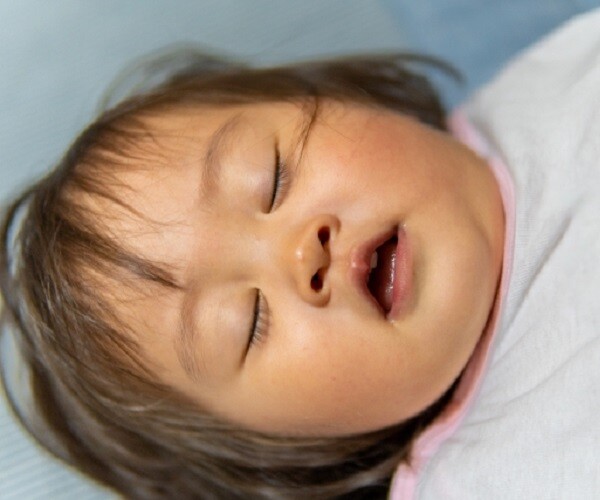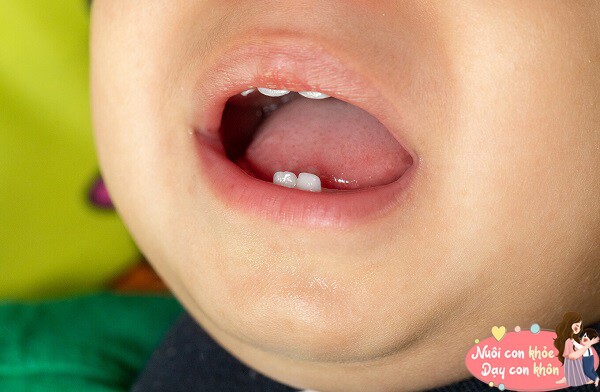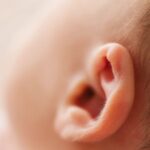Breathing through the mouth during sleep can have an impact on a child’s appearance, height, and even intelligence.


How does mouth breathing affect a child’s appearance?
Prolonged mouth breathing can impact a child’s teeth and facial structure, leading to abnormal development of the facial bones and the formation of a “long face” or “face VA” syndrome.
Typical facial features include a small nose, a short upper lip, protruding upper jaw, misaligned teeth, a narrow upper jawbone, a high-arched palate, and an underdeveloped lower jawbone.
Normally, children breathe primarily through their nasal cavity, with their mouths closed, allowing the facial muscles to maintain a natural balance, which is conducive to the normal development of the facial bones. However, when children breathe through their mouths due to various reasons, the balance of the facial muscles is disrupted, affecting the direction of facial bone growth and shape.

Mouth breathing restricts the development of the jawbone.
When breathing through the mouth, a child’s lips cannot close normally, and the muscles around the mouth remain relaxed for extended periods, causing the upper lip muscle to weaken and droop, unable to cover the upper front teeth, leading to an increased likelihood of buck teeth.
Additionally, the airflow in the mouth creates backward pressure on the upper jawbone, causing it to lengthen and narrow, resulting in a high-arched palate and a “V”-shaped upper jawbone, crowded teeth, and a poor bite.
Mouth breathing also limits the development of the jawbone, causing the jaw and chin to recede, making the face appear longer and narrower, lacking three-dimensionality and aesthetic appeal, and impacting the child’s future appearance.

What factors contribute to mouth breathing?

Image source: Pinterest.
Respiratory Illnesses
Inflammation of the adenoids and tonsils is the most common cause of mouth breathing in children. When the adenoids or tonsils become enlarged due to repeated inflammation, they can partially or completely block the airway, forcing the child to breathe through their mouth to get enough oxygen.
Allergic Rhinitis
Common allergens in the air, such as pollen, dust mites, and pet dander, can irritate a child’s nasal cavity, causing an allergic reaction, nasal congestion, and mouth breathing.
Deviated Septum, Enlarged Turbinates, and Nasal Polyps
These nasal conditions can also obstruct the nasal cavity, affecting normal nasal breathing and leading to mouth breathing.

Prolonged mouth breathing can impact a child’s teeth and facial structure.
Poor Oral Habits
Habits such as thumb sucking and tongue thrusting can affect the development of facial muscles and lead to mouth breathing.
Congenital Factors and Other Factors
Some children may have congenital defects in their jaw and facial structure that prevent them from fully closing their mouths, resulting in mouth breathing. Additionally, dry environments and air pollution can also impact nasal function, leading to a habit of mouth breathing.

How does mouth breathing affect a child’s intelligence and height?
Impact on Cognitive Development
When children breathe through their mouths during sleep, their airways are often narrowed, and their breath may be obstructed, resulting in insufficient oxygen intake.
Prolonged oxygen deprivation can impact brain development, leading to issues such as lack of focus, memory problems, and decreased learning ability, ultimately affecting their cognitive development.
Impact on Height Development
Normal nasal breathing can stimulate the secretion of growth hormones, while mouth breathing is associated with lower levels of growth hormone secretion.
Additionally, children who breathe through their mouths experience poorer sleep quality, with frequent disruptions in their breathing patterns, affecting the normal secretion of growth hormones and hindering their height development.

Mouth breathing is associated with lower levels of growth hormone secretion.

Is sleeping with an open mouth the same as mouth breathing?
Sleeping with an open mouth does not necessarily mean that the child is breathing through their mouth. Some children may occasionally open their mouths while sleeping but still primarily breathe through their noses.
To determine if a child is a mouth breather, parents should observe their breathing patterns when they are calm and relaxed. If the airflow is predominantly through the mouth, and the airflow through the mouth is more than 30% of the total respiratory airflow, and mouth breathing occurs more than 80% of the time, then it can be concluded that the child is a mouth breather.
Additionally, parents can use supplementary methods such as placing a small mirror in front of the child’s mouth while they sleep and observing if there is any condensation on the mirror due to airflow. Alternatively, a medical-grade sticker can be placed on the child’s lip, and if it falls off due to airflow within a short period, it may indicate mouth breathing.
Of course, it is always advisable to consult a medical professional for a more accurate and specialized assessment.

Treatment options may include medication, surgery, oral appliances, breathing exercises, and more.
Best Time for Treating Mouth Breathing
Generally, the age range of 3 to 12 years is considered the most crucial period for treating mouth breathing in children. During this stage, the development of the jaw and facial bones is still incomplete and highly malleable. Early intervention and treatment can effectively address mouth breathing habits, improve facial development, and mitigate negative impacts on intelligence and height.
A comprehensive treatment plan should be devised by a multidisciplinary team of medical professionals, including ENT specialists and dentists, based on the underlying causes and severity of the condition. Treatment options may include medication, surgery, oral appliances, breathing exercises, and more.
A child’s health is intricately linked to the family’s future happiness. Mouth breathing should not be taken lightly. Parents should be aware of the dangers of mouth breathing, pay attention to their child’s breathing habits, and seek timely medical advice if any abnormalities are noticed, ensuring their child’s healthy development and confident smile.
“5 Tell-Tale Signs of a Bright Future: How Your Child’s Intelligence and Wealth Are Intertwined”
“Your baby is destined for greatness! If your little one displays these unique facial traits, it could indicate a future filled with intelligence, success, and wealth. These fascinating features suggest your child is on a path to prosperity, so read on to uncover the secrets behind these intriguing signs.”
Are Big-Eared Children Smarter? Unveiling the Surprising Scientific Truth.
“The old adage claims that bigger ears equate to greater intelligence, but what does science have to say about this intriguing notion? Is there any truth to the idea that ear size and brain power are connected? Uncover the fascinating relationship between these two seemingly unrelated traits and explore the insights that lie beneath.”






































